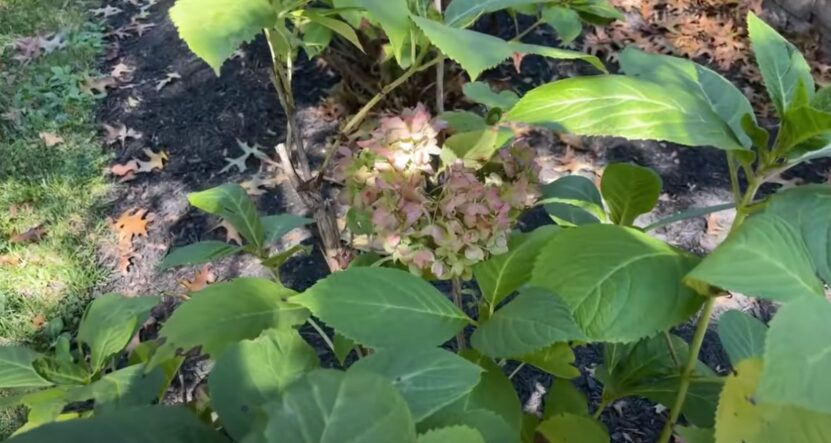Get This Report about Hydrangea Leaves Turning Yellow
The Single Strategy To Use For Hydrangea Leaves Turning Yellow
Table of ContentsThe Single Strategy To Use For Hydrangea Leaves Turning YellowHydrangea Leaves Turning Yellow Fundamentals ExplainedFacts About Hydrangea Leaves Turning Yellow RevealedThe Buzz on Hydrangea Leaves Turning YellowLittle Known Facts About Hydrangea Leaves Turning Yellow.The Facts About Hydrangea Leaves Turning Yellow Uncovered
The container must be large sufficient so the plant can expand and get all of the water and nutrients it requires. Panicles like the complete sun.
Ornamental grass, Rose of Sharon, or Holly shrubs are just a couple of concepts of plants you could make use of to block the wind. If you require to transplant, find a place in your yard that is well secured from sun and wind. Hair transplanting is finest performed in the autumn or the spring.
The Single Strategy To Use For Hydrangea Leaves Turning Yellow
Every one of the above situations might take place to any gardener. The good news is for all of us, hydrangeas are extremely durable, and will probably recoup very swiftly with a little love and treatment. The plants area is the most essential aspect when it involves getting well established and correct development. With a little forethought on planting place and appropriate upkeep, you'll have the ability to guarantee your hydrangeas! (Hydrangea Leaves Turning Yellow).
If Hydrangea leaves turn yellow and falls off later, it's typically due to overwatering, as the plant can not uptake water and sheds the leaves to cut off transpiration. Following this, Hydrangea leaves beginning to sag and shrivel. Given that both problems can create yellow fallen leaves, you must identify the distinction in between the overwatered and underwatered plant.
You can save the plant from yellow fallen leaves by using it the appropriate light and placement. If your plant gets yellow leaves, relocate it to a dark place.
6 Simple Techniques For Hydrangea Leaves Turning Yellow
, and temperature modifications can create yellowing leaves and brownish areas. If it gets also cozy, the edges of the fallen leaves end up being yellow, turn brown and create a crunchy structure.
Heavy dirt can conveniently block the oxygen supply to the origins and sever the connection with the top parts of the plant (leaves). Hydrangea leaves transform their color if they find small inconveniences in the dirt structure. This concern can create the Hydrangea leaves to transform yellow, experience leaf decreases, and provide a saggy plant in sync with overwatering.
But, yellow fallen leaves in Hydrangeas are the first signs of illness problem, commonly complied with by black spots, browning, drops, and wilting. Separate the unhealthy or pest-infested plant from the healthy plants to avoid condition spread. If it is a yard plant, remove all the infected fallen leaves using disinfected devices and tidy up all the particles.
The smart Trick of Hydrangea Leaves Turning Yellow That Nobody is Talking About
Reducing off helps Hydrangea color unneeded weight and protection, permitting the growth of brand-new fallen leaves. The finest time to prune Hydrangeas is spring when the plant prepares to grow foliage for the next period. Check for spent or diseased leaves and reduce the base of a stalk that joins the leaves and stem.
Stay clear of cutting healthy or environment-friendly fallen leaves, and do not eliminate useful content more than 25% of the plant's vegetation. Gather the discarded entrusts to shed or compost them. The primary factor behind the red fallen leaves in Hydrangea is bad soil or environmental conditions. If Hydrangea leaves have a white grainy substance on them, it indicates Powdery Mildew infection.
Also, repot the plant each year in spring or every 2 years if the growth rate is slow-moving.
8 Simple Techniques For Hydrangea Leaves Turning Yellow
There are six primary reasons this might occur:: The plant does not obtain adequate sunlight.: The roots are either as well damp or too dry.: The plant is too cold.: The soil is not acidic or alkaline sufficient for the hydrangea.: The plant isn't obtaining the right nutrients it needs to remain healthy and balanced.
Each reason influences the plant in a means that can be fixed if we understand how to care for hydrangeas the best way. When we talk about poor light for hydrangeas, we mean that the plant isn't obtaining adequate sunshine.
Without adequate sunshine, the leaves can turn yellow, the plant can become weak, and it could generate less flowers. To make sure a hydrangea gets sufficient light, it ought to be placed in a spot where it can enjoy the morning light and be shielded from the extreme afternoon sunlight. Overwatering is when a hydrangea plant obtains even more water than it requires.
Hydrangea Leaves Turning Yellow for Dummies
Without sufficient air, the origins can not do their job well, and the plant begins to suffer. Yellow fallen leaves may be an indicator that the plant is getting excessive water. On the various other hand, dehydration check my source happens when the plant does not get sufficient water. Like individuals, plants need water to remain healthy.

It is essential to understand that this sort of yellowing is different from the yellowing created by issues like excessive water or otherwise enough light. If the yellow fallen leaves are mainly at the Full Article bottom of the plant and the remainder of the plant looks healthy, it can just indicate that the fallen leaves are simply getting old.